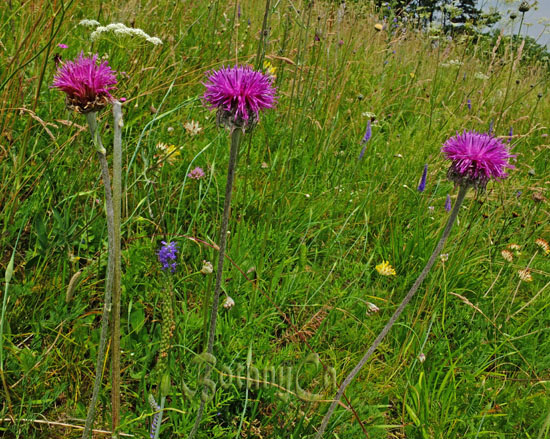The year of the Thistle
The beginning of the New Year has been busy with new seeds arrivals. Having a new garden space means also having new plants interests. Therefore, I declare 2016 as The Year of the Thistle!
According to wiki, “Thistle is the common name of a group of flowering plants characterized by leaves with sharp prickles on the margins, mostly in the family Asteraceae”. But besides the ‘true thistles’: Cirsium, Carduus and Onopordum, other genera that don’t have spiny leaves are also included and called thistles: Jurinea, Centaurea, Carthamus, Carlina, Rhaponticum, Echinops, Silybum, Berkheya and so on.
Few plants are more beneficial to bees, bumblebees and butterflies than thistles; also, many birds are consuming their seeds. Quite a few are cultivated as economical/medicinal plants. The oldest cultivated ‘thistle’ in the world was Carthamus tinctorius (safflower).
Unfortunately the name ‘thistle’ brings to mind mostly awful weeds. However, there are many species that are non-invasive and highly ornamental; some are even endangered in their wild habitat! To name only 2 North American Cirsium species that are not weedy and have become endangered: the endemic Cirsium hillii (C. pumilum var. hillii) – seen in the image, and C. pitcheri. Cultivated in the gardens but not too often is Cirsium canum (Queen Anne’s Thistle).
A most interesting genus is Jurinea. These are species familiar mostly to plant collectors; the genus includes alpine/sub-alpine species growing in mountain meadows, a few rare and/or endemics. In the image is shown Jurinea mollis growing in a sub-alpine meadow in the Carpathian Mts.
Other great species practically unknown in cultivation are Jurinea iljinii – with a restricted distribution range in the western part of the Greater Caucasus, and Jurinea sordida endemic in Crimea. They all have in common, non-spiny, finely lobed leaves and purple (in various shades) flower heads, which take on a beautiful silky appearance when the seeds are ripened.
There are also nice, low-growing Jurinea ssp. for the rock garden (if you can find seeds) like J. depressa and J. macrocephala, to name just a couple. From the low-growing thistles category, I will have to contend for now with the alpine thistle: Carlina acaulis. You can read more about it here.
To be continued…
Thistles gallery

















I love thistles! And your photos should be all anyone needs to convert to the thistle bandwagon.
Thanks Tina! I was sure you will agree :) Hardly any other group of plants so beneficial for pollinators of all kinds.
When I leave thistle to go to seed ( or just do not get them weeded out).
There is a yellow “cloud” of goldfinches at my place. I know the canadian thistle is a noxious weed, but. hopefully the plant police will not spot them
I too love thistles, admittedly the less prickly the better! I have never heard of Jurinea, but it looks wonderful. I am certain you will keep educating me throughout 2016!
They are taking care of the seeds, no problem :)
Too bad the name thistle got such a bad rep, some don’t spread by rhizomes and could be cultivated. Of course is hard to differentiate the seeds and probably the
seedlings in first stage.
Jurinea are the most beautiful I think; I should have posted an image with the non-spiny, fine lobed foliage. But the prickly ones are good too if your garden is under attack of rabbits and other ‘cute’ creatures ;)
The alpine thistle is fantastic! beautiful photo
Thank you. I have hopes to grow at least one in my garden :)